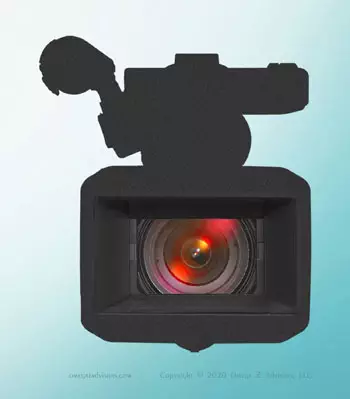Video Conferencing Problems Inhibiting Influence And Trust
Search “video conferencing problems.” Only technical and logistical ones show. Even if we solve all these problems, key ones remain. These, however, are emotional. They deal with influence and trust.
Take two presentations: one face-to-face (FTF) another via video conferencing (VC). Yes, FTF influences and builds trust better. Yet, it goes beyond that. VC negatively impacts these attributes. In other words, we’re more likely to erode our influence and trustworthiness with VC.
Unconscious Video Conferencing Problems

Video conferencing has other problems that extend beyond the technical and logistical ones commonly cited and known.
To see this, think of all we’ve learned about influencing and building trust. Keep it simple. Speak clearly. Make eye contact. Pause effectively. Look the part. All of these influence and build trust.
They form the root of unconscious video conferencing problems. All are hard to do FTF. They become harder and impossible via video conferencing. Look at other’s video images when they speak. Do they make eye contact? Does the lighting make them look good? Believable? Trustworthy?
For example, research shows pauses affect how others interpret what we say. Now, imagine a friend asking, “What do you think of my new partner?” You pause a long time. Is that good or bad? The time my brother asked me this, I paused too long. He jumped in, “Well, that says it all.”
Video Conference Listening With Face-To-Face Ears
When it comes to trust, eloquence influences more than honesty. Video conferencing, no matter how good the technology, will have glitches that don’t happen FTF. They break eloquence. Therefore, they retard influence and trustworthiness.
Humans lag technology. War proves this. Armies still attacked in tight lines even after guns improved in accuracy. They attacked across open fields even after machine guns came. They sent tanks into cities even after better anti-tank guns came.
With video conferencing human minds are listening with FTF ears. That means all the unconscious cues helping us decide whether to follow and trust others over the last thousands of years are doing the same in video conferences. Our minds have not caught up to the technology of video conferencing.
Tackling Unconscious Video Conferencing Problems
Tackling these unconscious video conferencing problems begins with seeing video conferencing as a communication tool, not a substitute. It’s not a good tool for influencing and building trust. That means anything important, large, difficult, complex and controversial is not a good VC candidate. They require much influencing and trust. Think change.
Small, easy, simple, mainstream topics are best. Deliver information. Don’t sell. Organize. Plan. Discuss. Don’t debate. Praise. Don’t criticize. Face-to-face is still the best for influencing and building trust. They’re the guideposts for not falling victim to unconscious video conferencing problems.


